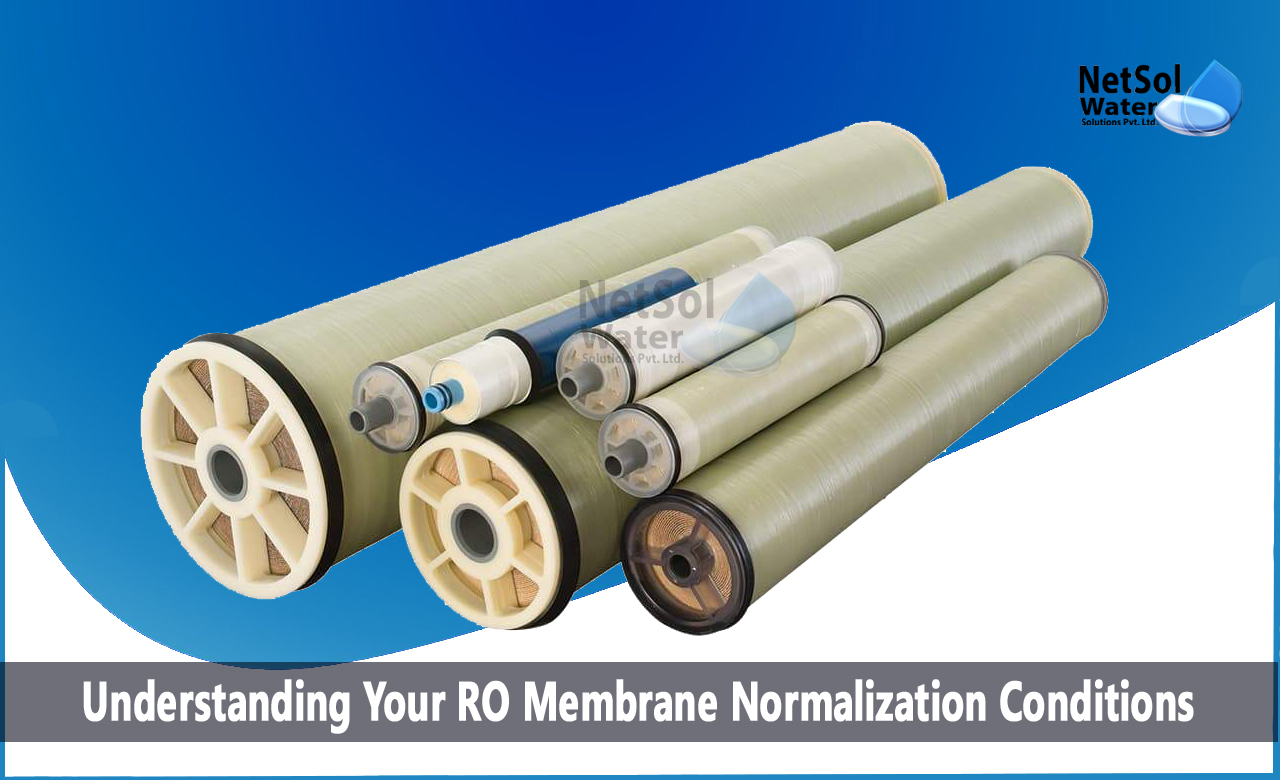Using membranes that have been specifically built, the water treatment process known as reverse osmosis (RO) removes dissolved pollutants from water. Because, RO membranes are semi-permeable, only "clean" water can pass through them, and the bulk of dissolved particles are removed from the feedwater stream.
The manufacture of drinking water, the creation of electricity, the pretreatment of steam boilers, the treatment of wastewater, and the production of semiconductor, pharmaceutical, and beverage products are all examples of RO uses.
Even though RO systems are a dependable technology for purifying water, they need to be regularly watched to assure the right water quality, and to cut down on overall operational costs including energy, premature membrane replacement, lost output, and labour.
The membranes must be regularly inspected in order to identify possible issues, before they escalate and become costly to plant operations. In order to maintain the RO efficiency, let’s understand the RO Membrane normalization conditions.
Monitoring
Data must be gathered, including the following, to monitor the operating circumstances and performance of a RO system:
· Infiltrate Flow (GPM)
· Conscious Flow (GPM)
· Feedwater Temperature (°F)
· Feeding Force (PSI)
· Increased Pressure (PSI)
· Permeate Force (PSI)
· Conductivity of Feedwater
· Permeate Conductivity
Performance Effects
Changes in temperature, pressure, and the quantity of dissolved particles in feedwater, can all have an effect on the performance of a RO membrane. These factors include scale deposit development, microbial fouling, and deterioration. For instance, higher permeate flow rates result from a membrane's ability, to transmit more water and dissolved solids at higher temperatures.
Additionally, membranes may be able to provide more permeate flow at higher pressures. Changes in the conductivity of the feedwater, which measures the dissolved solids, can affect both the quality and flow rates of the permeate.
Because, operational data is always changing as a result of circumstances, it might be difficult to evaluate it accurately. Even when the membranes are fouling during the warmer months, a RO Plant might still be able to produce the same amount of permeate.
Even though the membranes are fouling, the RO may still be able to produce the necessary permeate flow, during cooler months with higher feedwater pressures. If a RO were only evaluated on its capacity to create permeate, fouling may easily go unnoticed.
How to understand Your RO Membrane Normalization Conditions?
The data must be standardised to account for variations in pressure, temperature, and feedwater dissolved solids, in order to assess membrane performance accurately. RO operational data can be normalised and then analysed to determine the condition of the RO membranes.
By taking into account the effects of various pressures, temperatures, and feedwater dissolved particles, this allows a "apples to apples" comparison of how the system is working today, compared to when the membranes were new (or recently cleaned). After data normalisation, accurate data may be evaluated, allowing for the improvement of membrane maintenance and system operations.
Three main RO normalisation performance metrics are used, and they are as follows:
· Standard permeate flow
· Salt Rejection that is normal
· Pressure differential norm
The success of a RO monitoring and maintenance programme depends on these indicators.
1: The NPF, or normalised permeate flow rate, measures the efficiency of the RO membrane in creating permeate water. As it most accurately captures changes in the RO Membrane performance, NPF is frequently regarded as the most crucial monitoring metric.
The RO membranes need to be cleaned, if the NPF falls 10% to 15% below the baseline value (the reading taken when the membranes were first installed, when they were replaced, or when they were cleaned). The possibility of membrane breakdown can be raised if the normalised flow rate rises.
2: The RO system's ability to remove dissolved solids from the feedwater is measured by the normalised salt rejection (NSR), which also indicates the calibre of the RO permeates. Total dissolved solids (TDS) are measured as a percentage of the feedwater, compared to the concentrate with 97-99% commonly regarded as good.
3: The Normalized Pressure Differential (NPD) measures the difficulty in getting water through the RO membranes. This calculates the difference between the pressures at the membrane feed and concentrate. A rise in the pressure differential may be an early indicator that scale, biofilm, or even physical debris is obstructing water flow.
Conclusion
For many industrial, manufacturing, and process applications, RO systems can effectively provide sustainable water quality with data normalisation, regular monitoring, and proper maintenance techniques.
Netsol Water, leader in specialised RO water treatment solutions, provides the expertise, know-how, and technology needed to efficiently safeguard your RO equipment investments.
Manufacturer of mobile and pilot RO plants
For a variety of sectors, Netsol offers specialised water treatment plant solutions. We are also experts in building effective wastewater treatment facilities for businesses.
We can assist industries in becoming more efficient and ecologically friendly, thanks to our skilled team, experience, cutting-edge technology, and available resources.
Netsol Water is Greater Noida-based leading water & wastewater treatment plant manufacturer. We are industry's most demanding company based on client review and work quality. We are known as best commercial RO plant manufacturers, industrial RO plant manufacturer, sewage treatment plant manufacturer, Water Softener Plant Manufacturers and effluent treatment plant manufacturers. Apart from this 24x7 customer support is our USP. Call on +91-9650608473, or write us at enquiry@netsolwater.com for any support, inquiry or product-purchase related query.



